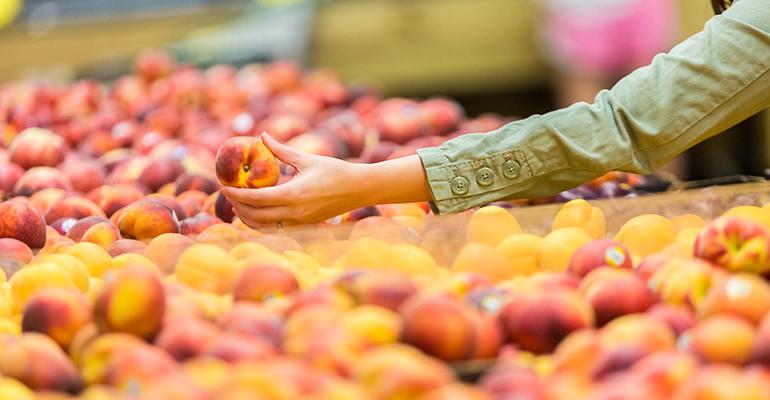TOP TAKEAWAYS
- At a compounded 3% growth rate, the U.S. grocery retail industry will more than double and be worth $1.9 trillion in 2053
- In the U.S., 62% of basket items have experienced a >4% inflation affecting not only food but also energy, transportation, and labor
- Food-at-home Inflation came in at 8% year-over-year in March 2023 and is predicted to ease back between 5% and 4% for all of 2023
Customer data science company dunnhumby has unveiled the trends that will have the biggest impact on grocery retail in the next three decades, including which grocers are still poised for growth in the future.
The data shows that personal finances will remain the biggest stressor for shoppers as they struggle between affordability and trying to buy healthy items. At the same time, new generations of consumers are making up more of the population and they have different demands including technology, sustainability, and new forms of consuming groceries.
The report included the largest 35 U.S. retailers across conventional, mass, club, specialty, discounter, drug, and dollar channels. Dunnhumby then identified 15 sub-trends that could be grouped into five mega-trends that will have the largest impact on the grocery retail industry.
At a compounded 3% growth rate, the study notes that the U.S. grocery retail industry will more than double and be worth $1.9 trillion in 2053. And although shoppers continue to feel the impact of inflation on their grocery dollars, dunnhumby research revealed Amazon, H-E-B, Costco, Sam’s Club, and Walmart are best positioned for the future.
While retail grocery shifts have gone through unprecedented events over the last three-and-a-half years, those short-term shifts tend to be cyclical and will not change the outcome for grocers.
However, the study said grocers will “rise or fall based on their ability to align themselves to the dominant demographic, cultural, economic, and technological trends that will slowly reshape the market context over decades to come.”
Here are more key findings from the study:
- More than any other age groups, Generation Y and Z have been scarred by both the Great Recession and the pandemic and those two periods framed their views on their personal finances
- “Fiscal conservatism” (concern about the economy as well as personal day-to-day and long-term finances) is the biggest source of stress for consumers and the most important over-arching trend that will continue to affect consumers over the next 30 years
- Health and wellness (2), data 3.0 (3), values-based consumption (4), and channel proliferation, (5) follow fiscal conservatism in the most important mega-trends of the future
- While 80% of consumers aspire to choose healthier foods when shopping, price is a barrier for 60% of them
The 10 retailers dunnhumby predicts to benefit from “fiscal conservatism” over the next 30 years include: Lidl (1), Food 4 Less (2), Aldi (3), Costco (4), Fry’s (5), Amazon (6), BJ’s Wholesale (7), H-E-B (8), Shoprite (9), and WinCo (10).
Conversely, it also names Harris Teeter, Wegman’s, Publix, and Sprouts Farmers Market share as most vulnerable to this trend.
CVS topped all retailers for the health and wellness mega-trend followed by Amazon, H-E-B, Rite Aid, Walgreens, Costco, Walmart, Fry’s, Kroger, and Meijer. Amazon was the top store for data 3.0, values-based consumption, and channel proliferation.
The dunnhumby Retailer Preference Index database contains over 70,000 consumer survey responses conducted from 2017-2022 and was analyzed to understand which trends matter the most to consumers. Retailers were then evaluated for 2053 based on their future expected customer base, the trends relevant to them, and the value proposition alignment required.





